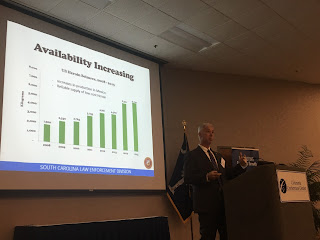The board of the Municipal Association of South Carolina has
selected Wayne George to be the sixth executive director of the organization.
George is the former mayor of Mullins where he also served on council and was
the Municipal Association board president in 1996. He was on the staff of the
Municipal Association for six years and later served in the S.C. House of
Representatives for two terms.
“I am extremely excited by the opportunity to lead
the Municipal Association of SC. It is humbling to be selected by the board of
directors. The Association has such a great reputation providing excellent
education, advocacy and programs for its members,” said George. “In cities
and towns, you will find some of the strongest leaders. Municipal workers and
elected officials are the backbone of our communities, and we look forward to
working with them to improve the quality of life for all citizens of our state.
In addition, you can expect us to build and grow our partnership with state and
national elected officials.”
The Municipal Association represents the state’s 271 cities
and towns by providing training, advocacy at the state and federal levels, and
programs that give local officials the tools they need to provide quality
services.
In June, then-Board President Bill Young, mayor of
Walterboro, appointed a search committee consisting of the board’s executive
committee, including Cayce Mayor Elise Partin, Florence Councilmember Octavia
Williams-Blake, Mauldin Mayor Dennis Raines and Isle of Palms Mayor Dick
Cronin; two past board presidents, Anderson Mayor Terence Roberts and Sumter
Mayor Joe McElveen; and Orangeburg City Administrator John Yow, who serves on
the Association’s board.
“Wayne’s background in local government, experience at the
State House, organizational experience as a successful business owner and years
of involvement with the Municipal Association on staff and on the board made
him the ideal candidate for executive director,” said Partin. “His dedication
to the strength of local government, which increases the strength of our state,
will continue the positive difference the Association makes.”
Miriam Hair, the Association’s current executive director,
plans to retire at the end of 2017 with more than 32 years with the
organization, the last nine as executive director.
“The search committee was fortunate to have a pool of very
qualified candidates. It was important that the Association continue the
established tradition of strong leadership in the executive director’s
position,” said Yow. “Wayne George’s vast experience, proven track record and
leadership skills will mesh well with the talented staff at the Association.”
George begins his new role on January 2.



















